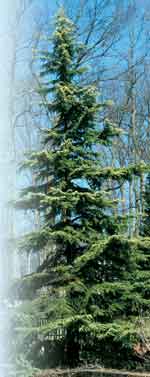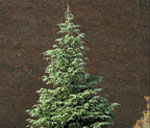Deodar Cedar Adds Grace to Landscape
go.ncsu.edu/readext?235996
en Español / em Português
El inglés es el idioma de control de esta página. En la medida en que haya algún conflicto entre la traducción al inglés y la traducción, el inglés prevalece.
Al hacer clic en el enlace de traducción se activa un servicio de traducción gratuito para convertir la página al español. Al igual que con cualquier traducción por Internet, la conversión no es sensible al contexto y puede que no traduzca el texto en su significado original. NC State Extension no garantiza la exactitud del texto traducido. Por favor, tenga en cuenta que algunas aplicaciones y/o servicios pueden no funcionar como se espera cuando se traducen.
Português
Inglês é o idioma de controle desta página. Na medida que haja algum conflito entre o texto original em Inglês e a tradução, o Inglês prevalece.
Ao clicar no link de tradução, um serviço gratuito de tradução será ativado para converter a página para o Português. Como em qualquer tradução pela internet, a conversão não é sensivel ao contexto e pode não ocorrer a tradução para o significado orginal. O serviço de Extensão da Carolina do Norte (NC State Extension) não garante a exatidão do texto traduzido. Por favor, observe que algumas funções ou serviços podem não funcionar como esperado após a tradução.
English
English is the controlling language of this page. To the extent there is any conflict between the English text and the translation, English controls.
Clicking on the translation link activates a free translation service to convert the page to Spanish. As with any Internet translation, the conversion is not context-sensitive and may not translate the text to its original meaning. NC State Extension does not guarantee the accuracy of the translated text. Please note that some applications and/or services may not function as expected when translated.
Collapse ▲
Cedrus
deodara
Todd Lasseigne
The Deodar cedar, Cedrus deodara, is one of the most graceful cedars, especially in youth, and has become a favorite among homeowners and landscapers. The tree is broadly pyramidal with graceful pendulous branches that become wide-spreading and flat-topped in old age.
The tree’s fine, textured foliage ranges from light blue to grayish green to silvery in color. The cones are 3 to 4 inches long by approximately 3 inches broad on short branchlets. The Deodar grows about 2 feet in a year when young. If root pruned, the Deodar transplants easily. The tree prefers a well drained, somewhat dry, sunny location and protection from sweeping winds.
There are many evergreen nurseries that have expanded their catalog lists to include C. deodara cultivars. Three interesting cultivars are ‘Kashmir’, a hardy form with silvery blue-green foliage that can withstand temperature drops to below zero; ‘Kingsville’, similar to ‘Kashmir’ but possibly hardier; and ‘Shalimar’, which boasts good blue-green color, excellent hardiness and grows 9 to 15 feet in 10 years from a cutting.

Cedrus
deodara
Todd Lasseigne
Due to its fine, textured foliage, Deodar cedar allows light and water to penetrate the grass or groundcovers that grow below. The few needles that drop are easy to clean up. You don’t have to worry about solid mats of fallen leaves that may threaten to smother other plants. Deodar cedar is a good substitute for the white pine but is subject to cold injury in zone 6.
The Deodar cedar is well represented at the JC Raulston Arboretum. Look for over 30 different cultivars within their collections, ranging from those with a prostrate habit, to those with a bluish cast to their foliage, to those exhibiting pendulous, drooping branches. This is truly one species with tremendous possibilities for the landscape!


